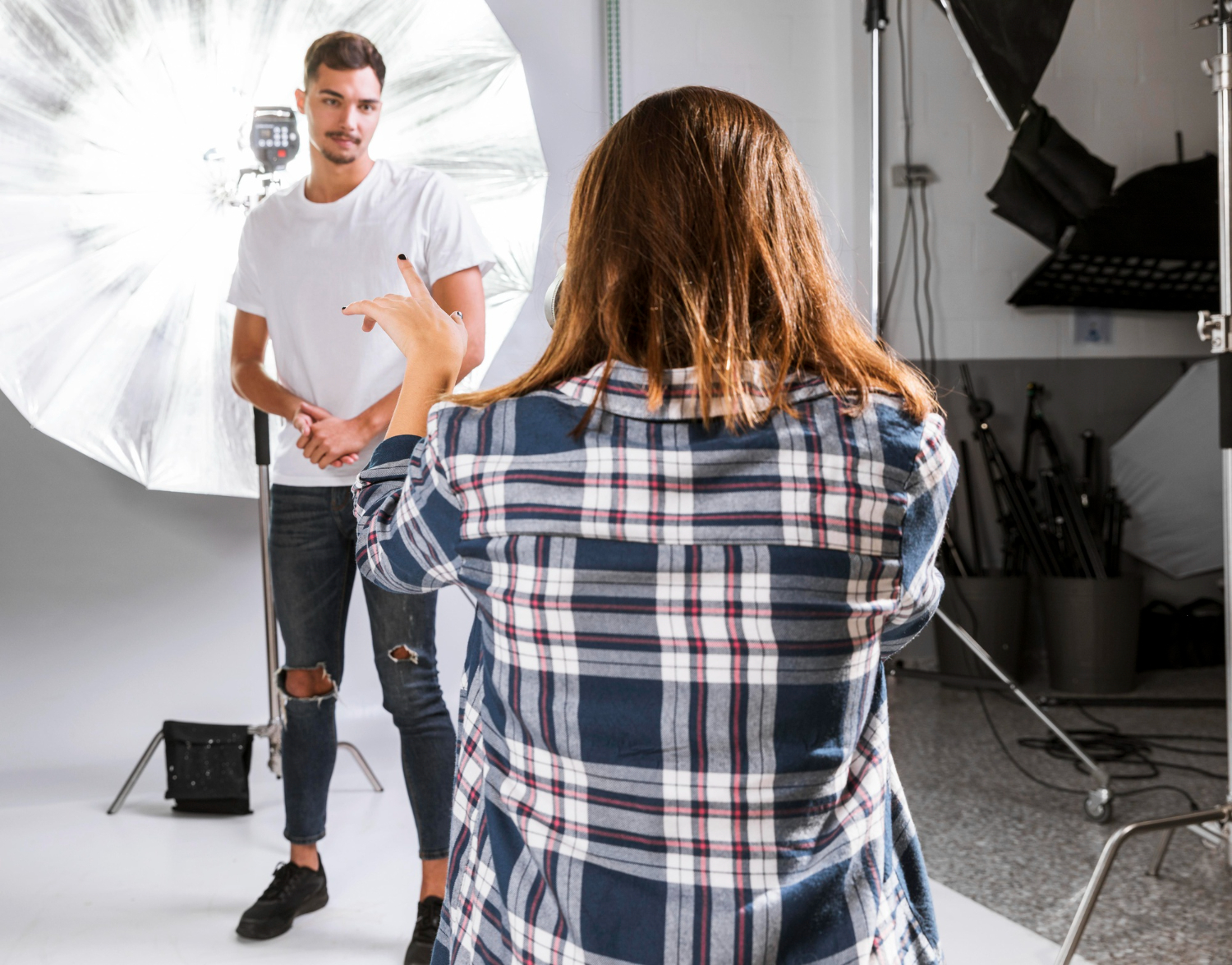Standing in front of a camera felt like second nature to me. I knew how to move, how to hold a pose, and how to express emotion with my body. But when I decided to move from modeling into acting, I quickly realized that the skills I had developed on the runway and in photoshoots were just the beginning. The shift required a new mindset, deeper emotional expression, and a fresh set of tools. Here’s everything I learned about how to transition from modeling to acting, from the practical steps to the mindset shifts that made all the difference.
Recognizing What Carries Over
Not everything from modeling transfers directly into acting, but many fundamentals do. For one, being comfortable in front of a camera is a huge asset. I already understood lighting, framing, and how to take direction from creative teams. That familiarity gave me an advantage on set. My awareness of posture, body movement, and facial control helped me with subtle physical acting.
What I needed to adjust was my focus. While modeling is often about stillness and projecting an image, acting requires continuous emotional flow. It’s about embodying a character and reacting naturally in the moment. That shift in intention was my first major lesson.
Taking Acting Classes
The next step in how to transition from modeling to acting is enrolling in solid acting classes. I didn’t just want to dabble, I wanted to take it seriously. Acting is an art and a craft, and I knew I needed training. I started with basic scene study, voice and diction, and improvisation. Each class peeled back another layer of my habits as a model and helped me grow into the vulnerability and authenticity that acting demands.
In particular, improv was a game changer. It helped me think fast, trust my instincts, and stop worrying about looking good. As a model, appearance is everything. As an actor, truth is everything. Letting go of perfection was one of the hardest but most rewarding shifts I made.
Understanding the Industry Shift
Modeling and acting may overlap in some ways, but they operate in different spheres. The casting process is more extensive in acting. Rather than just submitting photos and walking into a go-see, I had to learn how to audition. That meant preparing monologues, reading sides (script excerpts), and delivering believable performances under pressure.
It also meant building a new resume and reel. My modeling portfolio didn’t mean much to casting directors looking to fill speaking roles. I had to create short clips that showcased my range as an actor. This involved working on student films, short films, and indie projects to build up experience.
Developing a Character
One of the most transformative parts of acting is character development. As a model, I often played a role in a shoot, a theme, a mood, a brand aesthetic. But acting asked me to step into someone’s shoes completely. I had to know what they wanted, what they feared, how they spoke, and what motivated them.
I started journaling in character, creating backstories, and studying human behavior. This helped me understand that acting isn’t about pretending, it’s about revealing parts of ourselves that connect with a character’s truth. It’s a deeply personal process that goes far beyond the surface.
Working on Your Voice
Voice is everything in acting. I was used to letting images do the talking. Now, my voice had to carry emotion, intention, and meaning. I spent time working with a vocal coach to find clarity, projection, and resonance. I practiced monologues daily and recorded myself to hear how I sounded.
Breath control, articulation, and pacing became part of my daily routine. I discovered that the way I spoke could make or break a scene. Whether it was a whisper of sadness or a burst of rage, my voice had to match the emotional truth of the moment.
Building New Connections
In modeling, I built strong relationships with photographers, stylists, and agents. But acting required me to network all over again. I had to meet casting directors, acting coaches, producers, and other actors. I joined local theater groups, attended acting mixers, and signed up for workshops where I could meet industry professionals.
One of the keys to how to transition from modeling to acting is humility. I had to be okay with being a beginner again. Even though I had built a name in modeling, I was now at square one in a new field. That humility helped me make genuine connections and opened the door to valuable mentorship.
Creating a Compelling Acting Resume
My modeling comp card didn’t translate to acting, so I needed to start fresh. I crafted a professional acting resume that highlighted training, theater work, and any on-camera roles I had done. I added a headshot that was specifically designed for acting, different from a modeling shot. It needed to be natural, expressive, and reflective of the kinds of roles I was aiming for.
I also built a reel, showcasing different types of scenes to demonstrate my range. Just like a portfolio tells a model’s story, a reel shows an actor’s capabilities. It became one of my most valuable tools when submitting for roles.
Handling Auditions
Auditions were nerve-wracking at first. I was used to castings where I walked in, struck a pose, and left. In acting, auditions are more intimate. You’re often reading lines with someone or performing a prepared monologue. You’re asked to show who you are and how well you can become someone else.
I started preparing for auditions like a pro athlete prepares for a game. I memorized lines, researched scripts, and worked with coaches to fine-tune my delivery. Over time, I got better at taking direction on the spot, adjusting my performance, and staying grounded in the moment, even when nerves crept in.
Managing Rejection
Rejection in modeling stings, but I found it easier to brush off. In acting, rejection hit differently. Because acting requires emotional investment, it’s hard not to take a “no” personally. But one of the most important parts of how to transition from modeling to acting is building emotional resilience.
I learned to separate myself from the outcome. Whether I booked the role or not, I tried to view each audition as a chance to grow. Some of the best feedback I got came from roles I didn’t land. Each “no” brought me closer to a “yes,” and with every experience, I felt myself evolving into a more complete performer.
Balancing Modeling and Acting
At first, I kept modeling while I pursued acting. It helped me stay financially afloat and maintain visibility. But I had to be careful not to let modeling commitments interfere with acting opportunities. I communicated clearly with my agent about my new goals, and over time, I shifted my schedule to give acting the priority it deserved.
Eventually, the roles started to come. Small at first, student films, background parts, commercials. But they added up. And just like in modeling, momentum is everything. One opportunity led to another, and my confidence kept growing.
Adapting to Different Types of Sets
Modeling shoots are often quick, visually driven, and centered around wardrobe and makeup. Film and television sets are much more complex. The pace is slower, the stakes are higher, and the collaboration is broader. I had to adapt to working with directors, script supervisors, boom operators, and a much larger team.
I also had to learn on-set etiquette, things like hitting my marks, staying in character between takes, and respecting crew time. These details matter. Professionalism on set can make or break your reputation, and in the world of acting, word travels fast.
Staying Patient and Persistent
The transition didn’t happen overnight. I faced frustration, self-doubt, and moments when I wondered if I had made the right choice. But every time I stepped onto a set, even just to say one line or walk through a scene, I felt alive. Acting gave me a new sense of purpose and creative expression.
The journey of how to transition from modeling to acting is filled with both challenges and triumphs. It takes dedication, humility, and a willingness to grow. But if you’re passionate, persistent, and willing to put in the work, it’s absolutely within reach.
Conclusion
Modeling taught me how to show the world who I was. Acting taught me how to explore who I could become. Making the switch wasn’t always easy, but it was one of the most rewarding steps in my career. If you’re wondering how to transition from modeling to acting, know that your experience matters. Your presence, your poise, and your passion are already powerful tools.
With the right training, mindset, and effort, you can build an acting career that’s just as impactful, if not more, than your time in modeling. It all starts with that first brave step into the unknown and a deep belief in your ability to grow.

